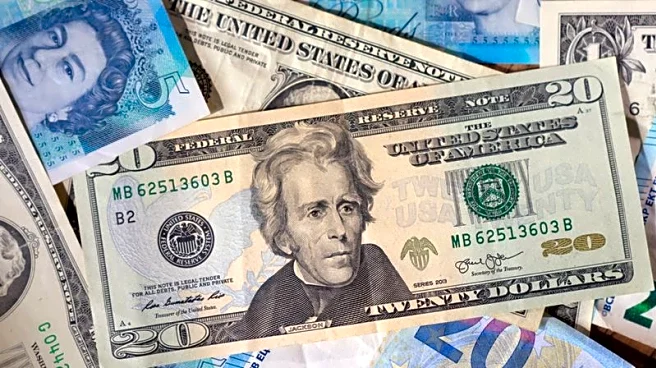By Lucia Mutikani
WASHINGTON (Reuters) -U.S. consumer prices likely increased moderately in July, though rising costs for goods like household furniture and apparel because of import tariffs probably resulted in a measure of underlying inflation posting its largest gain in six months.
The Consumer Price Index report from the Labor Department's Bureau of Labor Statistics (BLS) on Tuesday will be published amid mounting concerns over the quality of inflation and employment reports following budget and staffing
cuts that have led to the suspension of data collection for portions of the CPI basket in some areas across the country.
Those worries were amplified by President Donald Trump firing Erika McEntarfer, the head of the BLS, early this month after data showed stall-speed job growth in July, reinforced by sharp downward revisions to May and June's nonfarm payrolls counts.
The suspension of data collection followed years of what economists described as the underfunding of the BLS under both Republican and Democratic administrations. The situation has been exacerbated by the Trump White House's unprecedented campaign to reshape the government through deep spending cuts and mass layoffs of public workers.
"This is just outright data terrorism," said Brian Bethune, an economics professor at Boston College. "There is going to be more noise in the data. The problem then is, every time, let's say, with the CPI, it's a positive surprise, then they will say, oh, there's something wrong with the data collection and fire another person at the BLS."
The CPI likely rose 0.2% last month, a Reuters survey of economists showed. The anticipated slowdown from a 0.3% increase in June would reflect a slight decline in gasoline prices, which would partially offset rising food prices.
Economists say labor shortages at farms, as the Trump administration rounds up undocumented migrants for deportation, and tariffs were driving up food prices.
In the 12 months through July, the CPI is forecast to have advanced 2.8% after rising 2.7% in June.
Excluding the volatile food and energy components, the CPI is estimated to have climbed 0.3%, which would be the biggest gain since January, after rising 0.2% in June. The so-called core CPI was likely lifted by higher prices for tariff-sensitive goods, including motor vehicle parts and toys.
Businesses still selling goods from inventory accumulated before the sweeping tariffs came into effect largely accounted for inflation rising marginally. But slackening demand has curbed price rises for services like air travel, hotel and motel stays, preventing a broad-based increase in inflation.
SEPTEMBER RATE CUT EYED
In the 12 months through July, core CPI is anticipated to have increased 3.0% after rising 2.9% in June.
"It is still relatively early to see a full-throated tariff impact, but based on what has been seen so far, consumers are absorbing roughly one-third of the tariff burden so far, based on June CPI data," said Jason Pride, chief of investment strategy and research at Glenmede.
"As pre-tariff inventories decline, businesses may begin passing more costs onto households in the months ahead."
The Federal Reserve tracks different inflation measures for its 2% target. July inflation in line with expectations probably will not change financial market hopes that the U.S. central bank will resume its policy easing cycle in September after leaving its benchmark overnight interest rate in the 4.25%-4.50% range last month for the fifth-straight time since December.
Citing the need to "align survey workload with resource levels," the BLS suspended CPI data collection completely in one city in Nebraska, Utah and New York. It has also suspended collection on 15% of the sample in the other 72 areas, on average.
This affected both the commodity and services pricing survey as well as the housing survey, which the BLS said resulted in the number of collected prices and the number of collected rents used to calculate the CPI temporarily reduced. That has led to the BLS using imputations to fill in the missing information.
The share of different cell imputation in the CPI data jumped to 35% in June from 30% in May.
Different cell imputation, which the BLS uses when all prices are unavailable in the home cell, maintains the item category but expands geography. The home cell method, considered by economists as higher quality, uses the average price of the same item in the same area as the missing product's price.
The use of different cell imputation has grown from a share of only 8% in June 2024. Economists said while these measures adopted by the BLS will not introduce bias in the CPI data, the volatility was a cause for concern.
"A growing share of imputations in CPI means a larger portion of inflation is driven by models, assumptions, and estimates instead of sampling actual prices," said Michael Gapen, chief U.S. economist at Morgan Stanley.
"It increases the room for subtle variations in methodology to drive a persistent wedge between actual and estimated prices. We have no evidence this is happening now, but investors are right to have concerns."
(Reporting by Lucia Mutikani; Editing by Andrea Ricci)












